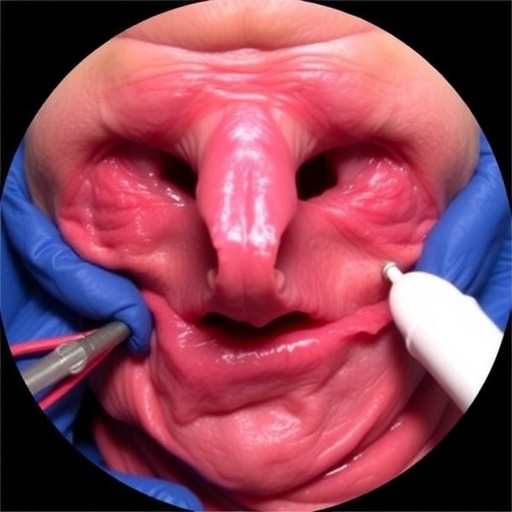The burden of cardiovascular, metabolic, and neurological diseases (including ischemic heart disease, stroke, diabetes, and Parkinson’s disease) is particularly high, and these conditions affect millions around the world annually. In order to develop effective treatment strategies against these diseases, it is important to delineate the cellular and molecular pathways that contribute to their development. Three pre-clinical studies published in Volume 13 Issue 2 of Journal of Pharmaceutical Analysis have done just that.

Credit: Journal of Pharmaceutical Analysis
The burden of cardiovascular, metabolic, and neurological diseases (including ischemic heart disease, stroke, diabetes, and Parkinson’s disease) is particularly high, and these conditions affect millions around the world annually. In order to develop effective treatment strategies against these diseases, it is important to delineate the cellular and molecular pathways that contribute to their development. Three pre-clinical studies published in Volume 13 Issue 2 of Journal of Pharmaceutical Analysis have done just that.
The first study, published online on December 5, 2022, focused on myocardial infarction (MI), better known as a heart attack. Given that the repair of damaged heart tissue following MI is crucial for maintaining cardiac function and prolonging patient survival, the study explored the mechanisms underlying this process. It focused on elucidating the role of a post-translational modification called SUMOylation and the response of cardiac cells to the lack of SUMO1, a key protein involved in this modification. The study revealed that mutant mice who lack SUMO1 show aggravated systolic dysfunction and infarct size after MI. Single-nucleus RNA sequencing and in vitro studies were conducted in three cell types: cardiomyocytes (heart muscle cells), fibroblasts (which provide collagen and connective tissue for heart cells), and endothelial cells (which line the blood vessels). The authors sum up their findings: “The findings revealed that SUMO1 overexpression and deletion in different cell types have different effects on cardiac recovery following MI. However, its cardiomyocyte-specific overexpression can have cardiac benefits.” Hence, modulating SUMO1 expression in different heart cell types could enable the treatment of MI.
Made available online on November 21, 2022, the second study examined the mechanisms underlying a link between diabetes and Parkinson’s disease. One key finding was that high glucose levels in the brain microenvironment contributed to the increased risk of Parkinson’s disease in patients with diabetes. Interestingly, the researchers found that high glucose levels enhance the neurotoxic effects of the neurotoxin 6-hydroxydopamine (6-OHDA) in motor neurons. Metabolomic analysis revealed that high glucose levels impair neuronal energy generation pathways, promoting mitochondrial loss and neuronal death. These effects are mediated by a protein called pyruvate kinase M2 (PKM2), which is involved in glucose metabolism. Interestingly, blocking this protein could prevent neuronal damage and reduce the risk of Parkinson’s disease in diabetic rats. “Therefore,” one author says, “the targeted inhibition of PKM2 could offer a new tool for preventing the development of Parkinson’s disease in people with diabetes.”
The final study explored the potential of a potent antioxidant, celastrol, in mitigating oxidative damage after ischemic stroke. The results of this study, which was published online on January 7, 2023, attested to the potential of celastrol in exerting antioxidative effects on astrocytes, a type of brain cell, after ischemic stroke. They showed that celastrol treatment leads to an increase in the expression of a protein called Nrf2 by targeting Nedd4, an enzyme. Liquid chromatography-tandem mass spectrometry revealed that celastrol directly bound to Nedd4, releasing Nrf2 from Nedd4 in astrocytes. Celastrol also blocked the Nedd4-induced increase in astrocytic reactive oxygen species following ischemic injury. Accordingly, celastrol inhibited oxidative stress and astrocyte activation, preventing damage to nerve processes (axons) and apoptosis of neurons. The authors of this study believe that “celastrol could be a potential therapeutic agent for stroke.”
The findings from this series of studies open up new therapeutic doors, and provide hope for the development of better disease management strategies
***
Reference
Authors: Zhihao Liu a, b, Xiaozhi Liu c, Li Liu a, b, Ying Wang c, Jie Zheng c, Lan Li b, d, Sheng Li b, Han Zhang b, d, Jingyu Ni b, d, Chuanrui Ma a, Xiumei Gao b, d, Xiyun Bian c, and Guanwei Fan a, b, d
DOI: https://doi.org/10.1016/j.jpha.2022.11.010
Affiliations:
a First Teaching Hospital of Tianjin University of Traditional Chinese Medicine, National Clinical Research Center for Chinese Medicine Acupuncture and Moxibustion
b State Key Laboratory of Component-Based Chinese Medicine
c Tianjin Key Laboratory of Epigenetics for Organ Development in Preterm Infants, The Fifth Central Hospital of Tianjin
d Haihe Laboratory of Modern Chinese Medicine
Journal
Journal of Pharmaceutical Analysis
DOI
10.1016/j.jpha.2022.11.010
Method of Research
Experimental study
Subject of Research
Animals
Article Title
SUMO1 regulates post-infarct cardiac repair based on cellular heterogeneity
Article Publication Date
1-Feb-2023
COI Statement
The authors declare that there are no conflicts of interest.




